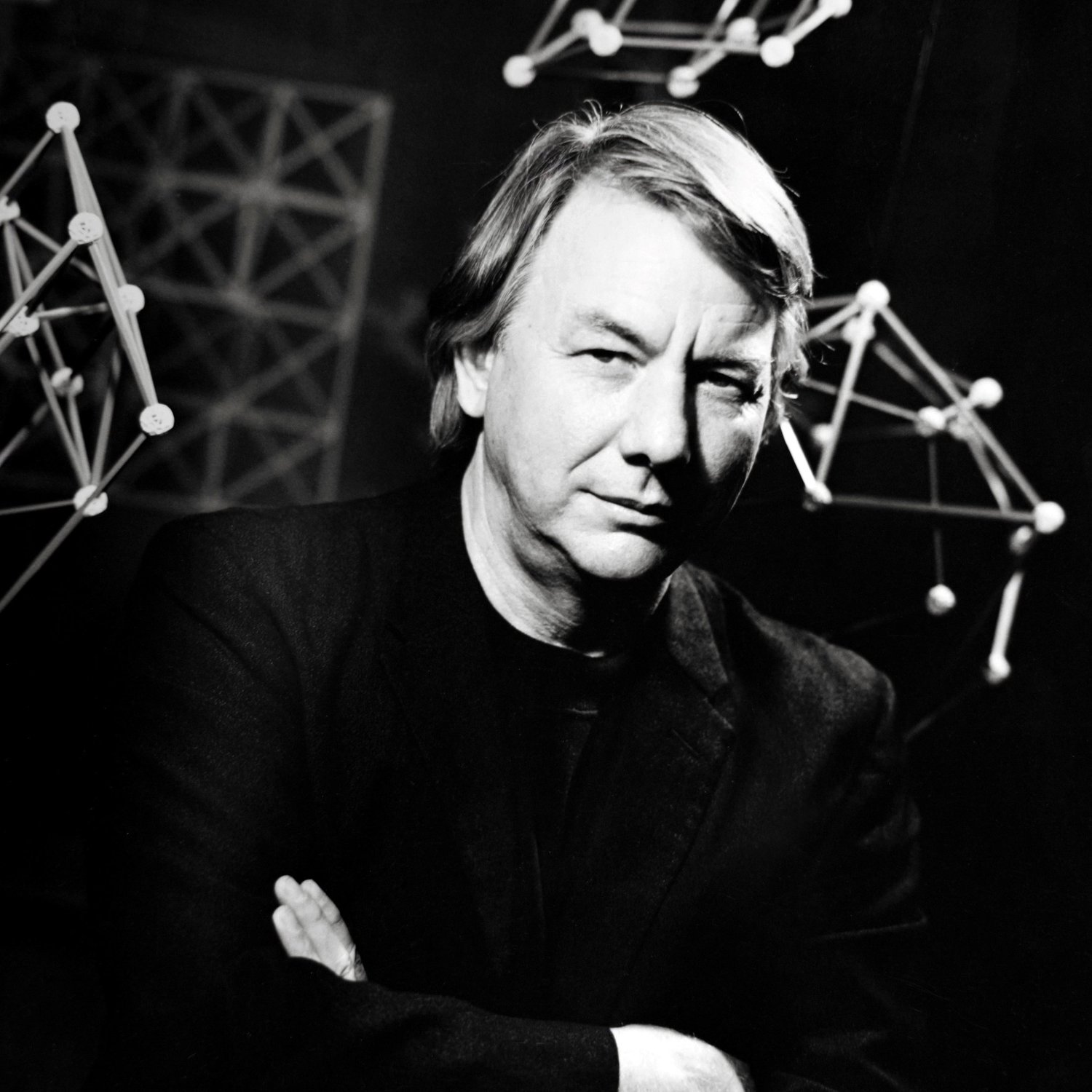Psychedelic Art
In 1965, Clark entered one of the most innovative and fertile periods of his art career. Having left his graduate studies program at the University of Colorado to establish an art community with fellow artists Gene Bernofsky, Joanne Bernofsky, and Richard Kallweit; he became one of the founders of Drop City, located near Trinidad, Colorado. The concept behind Drop City was to work together and independently in a community dedicated to art-making.
Droppings
Art was defined broadly, including not only paintings, ceramics, and traditional sculpture, but also “drop art,” or “droppings,” which inspired its name. Droppings were seemingly random objects placed in environments where they didn’t belong—the purpose being to get people to look at them as art objects. Drop Chart pictured here is an example of one of the droppings at Drop City. These objects were placed all over the property.
Fig. 2 Theater dome with Manuel Neri sculpture
The colorful domes and zomes that the Droppers (Drop City residents) built and lived in were considered as works of art as well. In fact, the Droppers intended the entire community to be viewed as an art installation. (Fig. 2)
Paintings
While building homes for what quickly became a growing community thanks to national media attention, Richert also continued painting on canvas, following threads he’d begun at the university that explored space and perspective. Such works as Cubic Wall, Blue Room, (figs. 3 & 4) and P-Planes 2 presaged the series of more elaborate pictorial and figurative paintings that he produced in the 1990s.
Collaborative Art
Richert and other Droppers explored collaborative work as well, starting in 1966 with The Being Bag, considered by many as the first underground comic. This anti-war manifesto tells the story of “three unfortunate dolts” (characters based on Richert, Gene Bernofsky, and Richard Kallweit) setting about to change the world. A fourth Dropper, Charles DiJulio silk-screened the drawings and printed 64 copies of the work, which they hoped would make them all wealthy. (Fig. 5)
A more ambitious collaboration occurred with The Ultimate Painting, which became an icon of the 1960s counterculture movement. The work is comprised of a complex, circular image that comes to life when spinning opposite a stroboscopic light. In motion, the work reveals multiple, colorful images and geometric patterns, with different images emerging at varying frequencies of the strobe light. Originally housed in the Theater Dome at Drop City, it was used during multi-media shows at art centers and college auditoriums around the country. In 1968, The Ultimate Painting was included in the Brooklyn Museum’s highly acclaimed E.A.T. (Experiments in Art and Technology) exhibition, curated by artists Robert Rauschenberg and Billy Kluver. (fig. 6)
Psychedelic Art
By the time The Ultimate Painting was shown in NY, the community had begun to fray. With the emergence of the “hippie movement,” thousands of young people flocked to the settlement—not just artists, but also runaways, bikers, and addicts, creating an atmosphere of chaos and transience. Disappointed in this development, the Bernofsky’s left for San Francisco; and Richert and his new wife, intending to return to Drop City, moved to New York City, where Richert made art commercially for the Third Eye Poster company. The posters reflected the times in Clark’s unique style. His images included geometric work, such as Snowflake (fig. 7), that exhibited Clark’s appreciation of geometry and took on psychedelic profundity as they glowed under black lights. One of the paintings Clark created for the poster company that never made it to poster form was Tree of Life (fig. 8), which displays his fascination with fractals. In another work-for-hire project, Clark created a sign for architect and Drop City friend Steve Baer. While Clark never returned to Drop City, as he intended, he continued making art and grew a successful art career. The work he created throughout his career was greatly informed by his years at Drop City.







